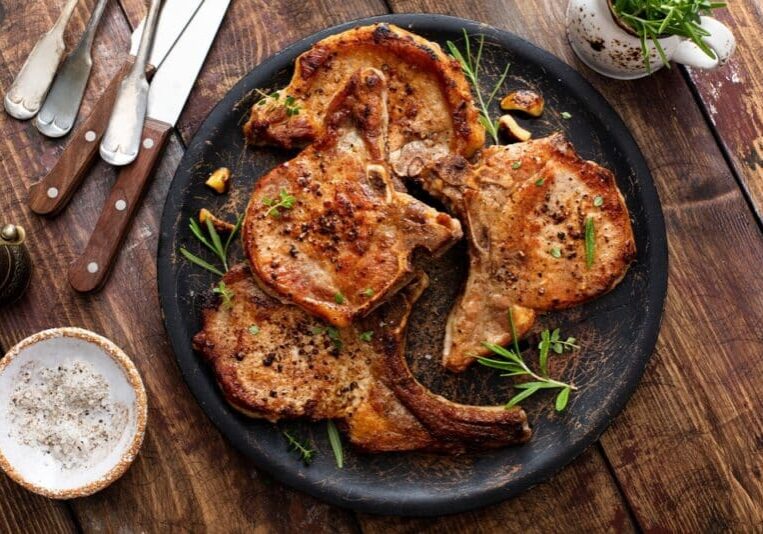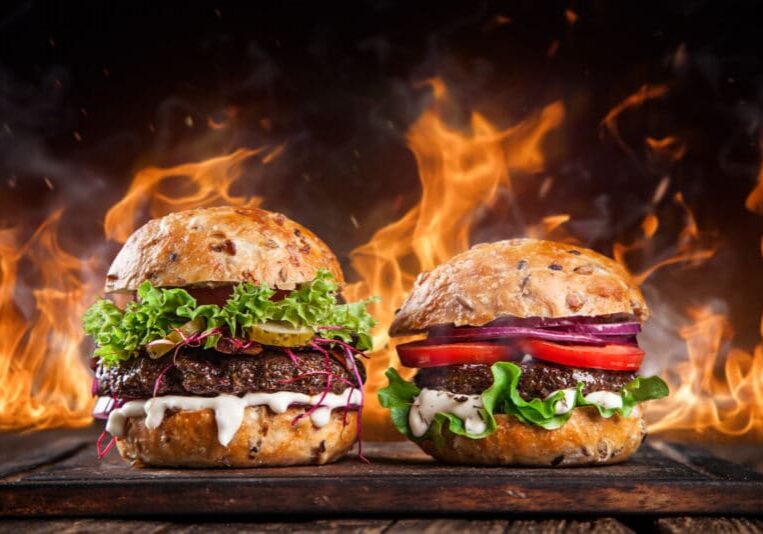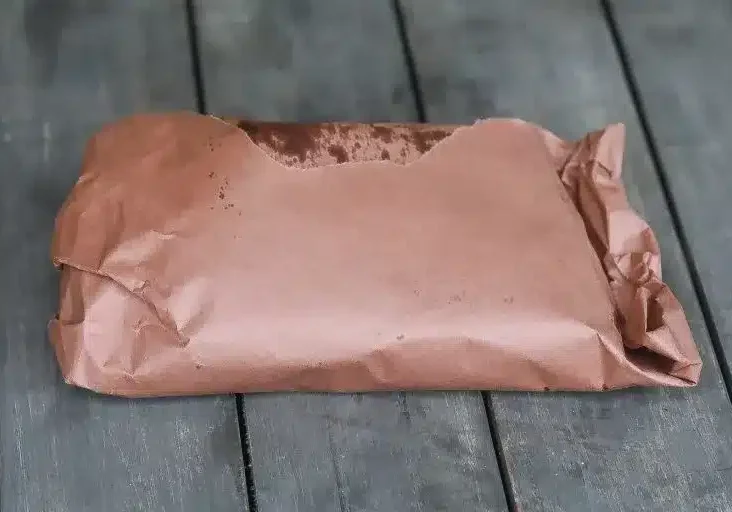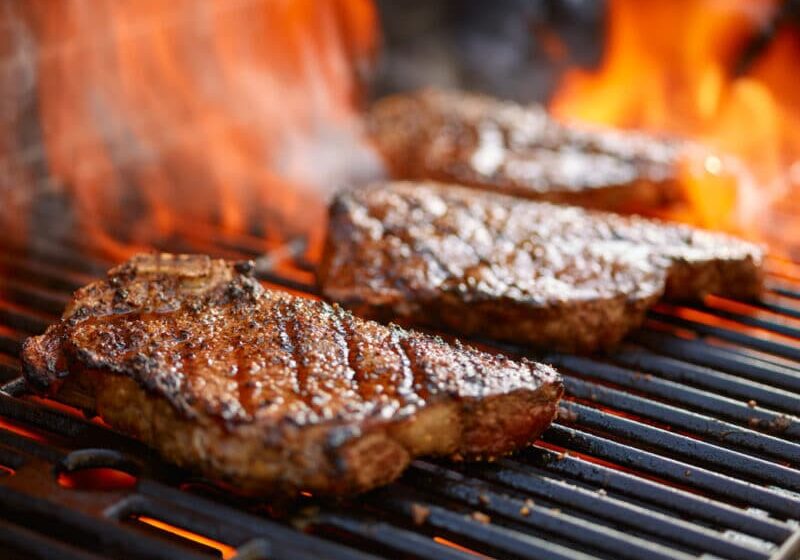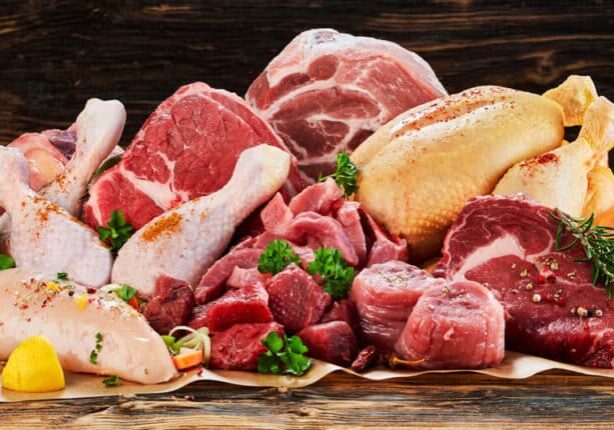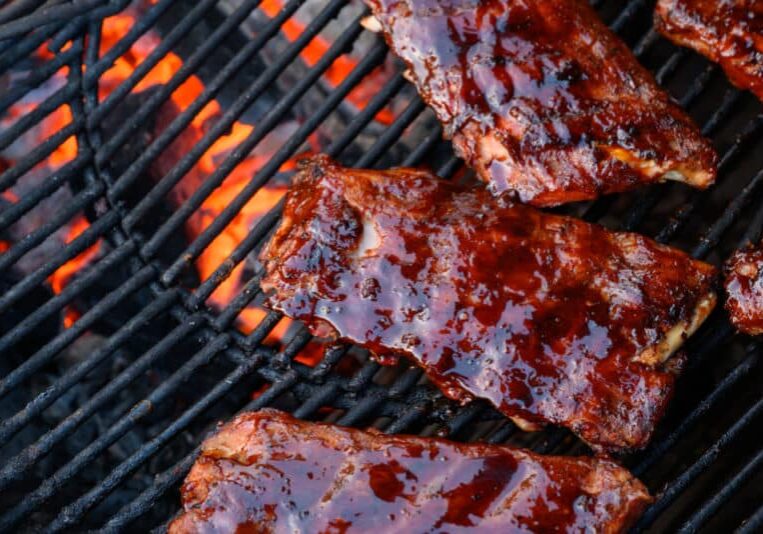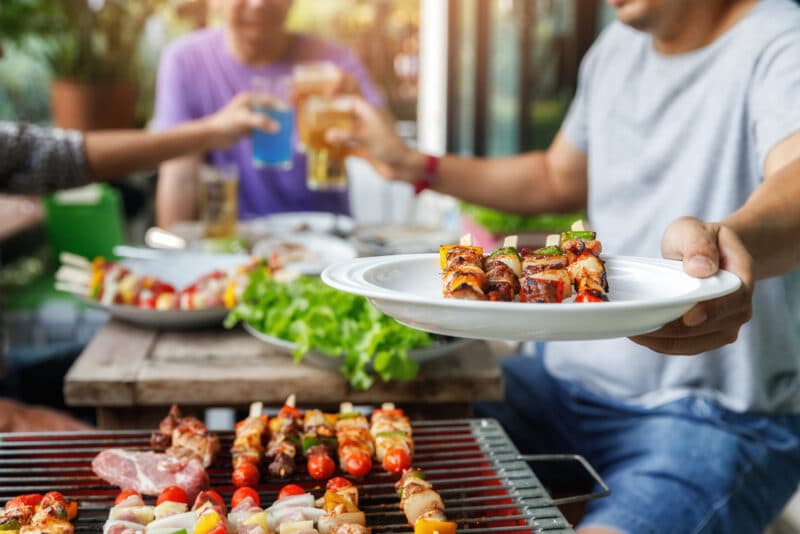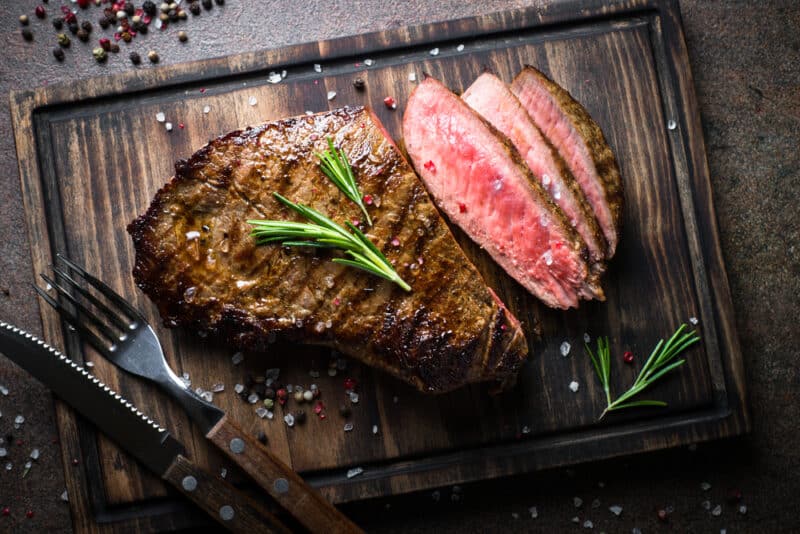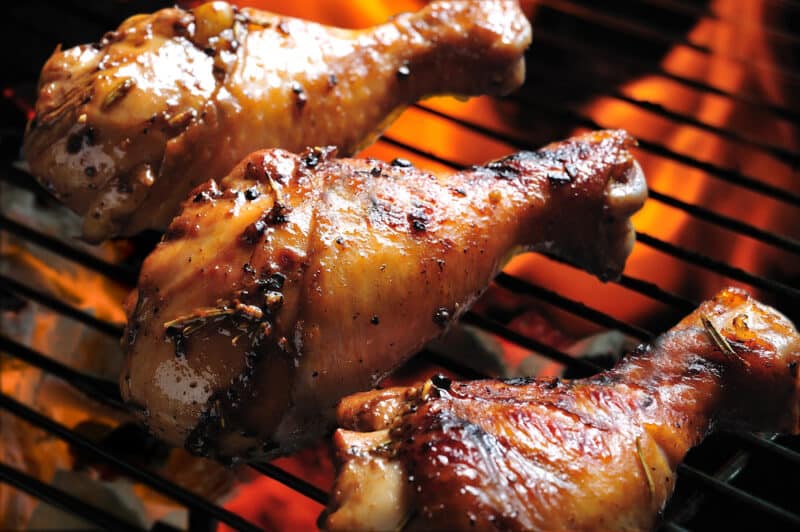Poor Man’s Burnt Ends
TheGrillingMaster.com is reader-supported. If you buy something using the links on our site, we might earn an affiliate commission at no added cost to you. This helps us pay our staff to keep making awesome content for you!
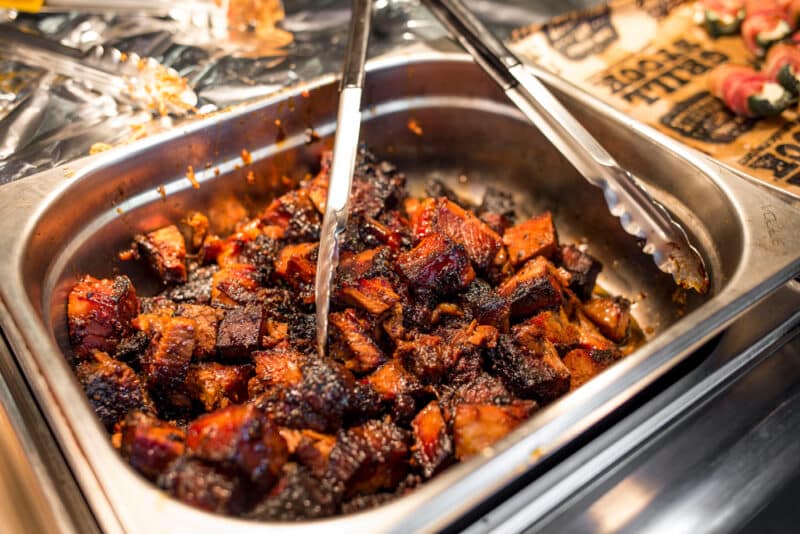
When you hear “Burnt Ends,” you probably picture those classic ones that come from the fatty part of a whole Packer brisket. They’re slow-cooked until they’re super tender and then drenched in a homemade BBQ sauce that’s out of this world.
Well, we use that same technique for our Poor Man’s Burnt Ends, but we swap in a cheaper beef roast that’s still just as tasty.
The result? These juicy, tender bites are covered in a mouthwatering homemade barbecue sauce.
And the best part? It’s a breeze to clean up. This recipe is especially handy when you’re short on time and just need a burnt ends fix.
In this article, we’ll share the secrets of making mouthwatering poor man’s burnt ends.
What are Burnt Ends?
Have you ever tried making brisket burnt ends? It’s a super popular barbecue dish that actually originated in Kansas City, Missouri. So, basically, burnt ends are made from the point of a beef brisket, which is a really flavorful cut of meat with lots of marbling.
During the cooking process, the point is separated from the flat and cooked until it’s crispy on the outside, but still tender and juicy on the inside – super tasty!
Once they’re all cooked up, people usually chop them into small cubes and serve them on their own or as a topping for things like sandwiches, nachos, or baked potatoes.
The smoky flavor is what makes them so darn popular among barbecue enthusiasts.
And get this – you can make burnt ends from other cuts of meat too, not just beef brisket. So, they’re a pretty versatile dish that won’t break the bank.
What are Poor Man’s Burnt Ends?
Poor man’s burnt ends are a cool twist on the classic burnt ends but without the fancy meat. Instead, you use a cheaper cut like chuck roast. The process is pretty similar, but there are a few tweaks here and there.
These bad boys are perfect if you’re on a budget or if you just want to switch things up. You can enjoy them on their own or add them to your favorite BBQ dishes. And don’t let the name fool you, they’re just as tasty as the real deal.
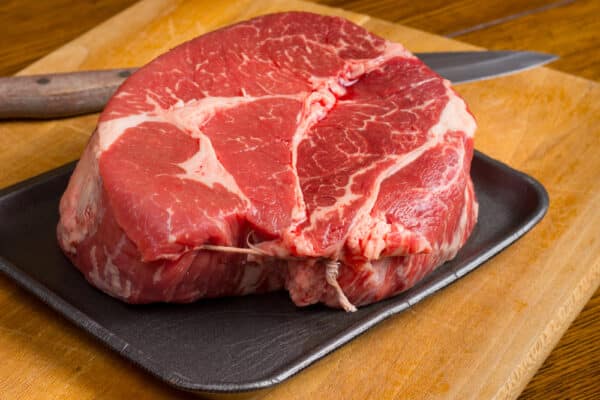
Raw Beef Chuck Roast
Why Use Chuck?
Using chuck roast is a smart hack to get that delicious burnt-end taste without breaking the bank on a pricey brisket.
You know how it goes; you can’t really buy the point end of brisket alone at the grocery store. So, you end up buying a whole Packer brisket, weighing 10 to 12 pounds, and spending a whopping $50 to $100!
But what if I told you that you can smoke a beef chuck roast to make Poor Man’s Burnt Ends that are just as flavorful and way more affordable?
A 3-pound chuck roast costs only $15 (or even $10 if you’re lucky to snag it on sale!). Plus, it cooks faster since it’s a smaller piece of meat. Give it a try!
If cooked correctly, chuck roast burnt ends can give you not only the exact same look as brisket but also the same taste and tenderness.
Where Does Chuck Come From?
If you’re looking for the best beef cut to whip up some poor man’s burnt ends, chuck roast is the way to go. However, you should choose one with a lot of marbling.
While brisket comes from the cow’s breast area, chuck comes from the front and includes parts from the shoulder blade, neck, and upper front leg.
It’s a tough cut since those muscles are getting a workout every day while the cow grazes, but it’s packed with flavor.
Lots of connective tissue means it’s best cooked low and slow, making it perfect for the smoker. That’s why you’ll often see it in stews and braised dishes.
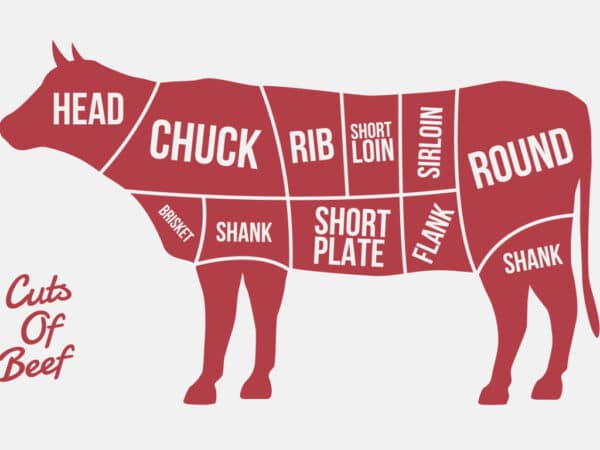
Diagram of beef cuts
What is the Best Wood for Smoking Chuck?
When it comes to smoking chuck, the type of wood chips you choose can really make a difference in the flavor. Everyone has their own preference, so it’s totally up to you! Some popular options are hickory, oak, mesquite, and cherry.
Hickory is a bold choice that packs a flavorful punch, while oak is a bit more understated and lets the natural taste of the meat shine through. Mesquite has a sweet and smoky flavor, and cherry is a fruity and mellow option.
If you’re feeling adventurous, try mixing different woods together for a unique taste. Just remember, the wood choice is key to getting the perfect flavor for your chuck roast.
How to Make Poor Man’s Burnt Ends
When it comes to cooking beef chuck, we’ve got to treat it with some extra love. This cut of meat is tough, so we’ve got to cook it for as long as possible at the right temperature.
This way, the connective tissue breaks down, and fats melt and blend into the meat, making it super tender and mouth-watering.
Now, if you’re smoking meat, make sure you use a meat thermometer. Don’t rely on cooking time alone because it varies every time.
For poor man’s burnt ends, set your smoker to 275℉ and cook the beef chuck to 165℉ for the initial smoking. Then, wrap it in foil or butcher’s paper and wait for it to reach 195℉. As a rule of thumb, it should take about 45 minutes per pound to reach the desired internal temperature.
When to Cut the Chuck Roast into Cubes?
While some pit masters choose to smoke the whole piece of meat before cutting it into cubes for poor man’s burnt ends, I prefer to cube the raw meat before smoking, even though it increases the prep time.
Smoking the chuck roast can take a total time of 5 hours or more, while cubes need only about 2 hours. Also, instead of having the spice rub covering the outsides of the whole chuck roast, the cubes can absorb a lot more of the seasoning mix.
So, although I’m describing the process of smoking chuck cubes, the instructions for the whole roast are the same because it is all done by internal temperatures, which are reached sooner in cubes. The only difference is when the meat is cubed. So, let’s get smoking!
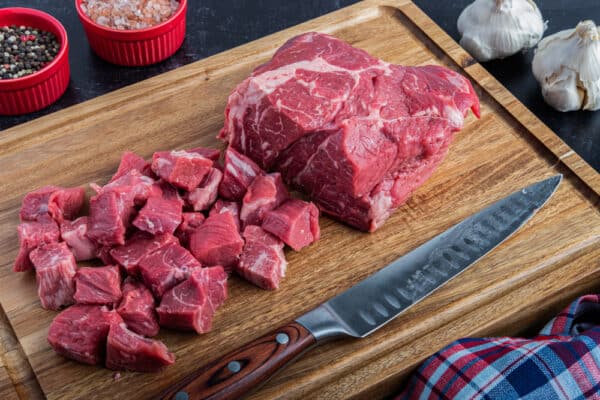
Beef Chuck Cubes
1. Fire up the Smoker
Get your smoker up to a consistent temperature of 275°F.
I use a traditional offset smoker with hickory wood chips, although, sometimes I like to experiment with a blend of different woods. However, a Traeger or another make of pellet smoker works just as well.
2. Cube the Meat for Your Poor Man’s Burnt Ends
Cut the chuck roast into 1″ by 1″ cubes, as evenly as possible for even cooking.
Place all cubes in a large bowl to make seasoning easier. Drizzle a few drops of oil across the top of the burnt ends and use your hands to mix.
3. Add Seasoning
Less is more when you season these chuck roast burnt ends. I mix about 2 tablespoons each of kosher salt and cracked black pepper to sprinkle onto the cubes. You might want to add garlic powder.
However, seasoning is absolutely a personal choice, so use your favorite BBQ rub or follow your poor man’s burnt ends recipe.
Use your hands to mix the seasoning in by hand and add more until each cube has an even coat of seasoning on all sides.
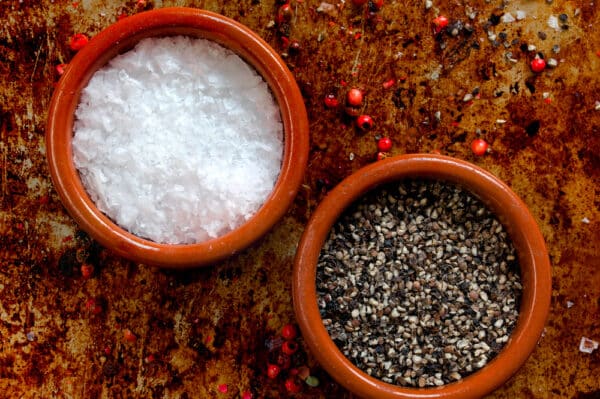
Kosher Salt and Cracked Black Pepper
4. Get the Chuck Cubes on the Grill
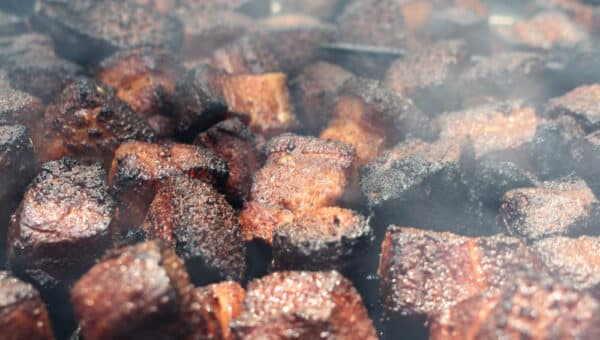
Burnt Ends in Smoker
Preheat your smoker and when the temperature reaches 275°F, spread the cubes of chuck out evenly on your grill grate. It’s always a good idea to place a water pan underneath the grate to catch the drippings and help deflect the heat. Another option is to set the burnt end cubes on a cooking sheet with a slightly raised grid.
OR if you prefer to smoke the whole chuck roast and cut it later, place the chuck roast directly on the grill grates and smoke until an internal temperature of 165°F, about 5 hours.
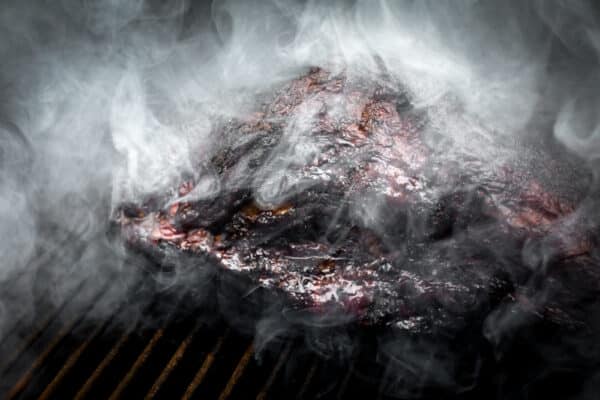
Whole Roast in Smoker
5. Spritz the Burnt Ends
After about an hour of smoking, spray the burnt ends with a 50-50 mix of beef broth and water to keep the chuck moist and also help with bark formation. Some people say this also helps the smoke stick to the meat, giving a better smoke ring.
You can repeat this after another hour if the burnt ends seem dry.
6. Prepare the BBQ Sauce
Prepare your favorite BBQ sauce while your burnt ends are in the smoker. A BBQ sauce with a bit of added brown sugar or honey, and a splash of apple cider vinegar has the sweetness and a bit of sourness you want.
Let it reduce somewhat in a saucepan on one side of the pellet grill while you’re smoking the meat, it’ll be ready by the time your burnt ends’ internal temp reaches wrap time.
If you’ve opted for smoking the whole chuck roast, you can get your sauce ready while you rest the smoked meat.
If the Poor Man’s Burnt Ends are to be the main course at your cookout, this may also be the perfect time to prepare the sides like baked beans and potato salad or coleslaw.
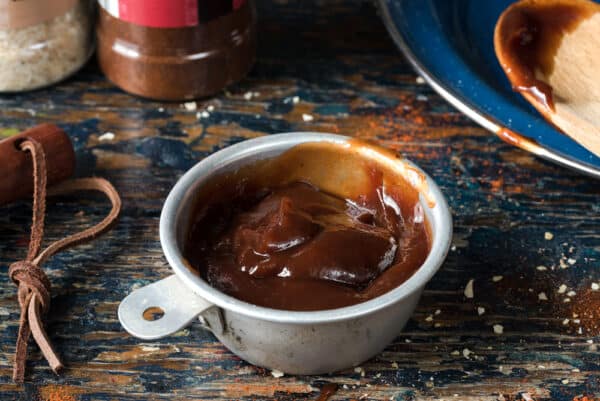
BBQ Sauce for Poor Man’s Best Ends
7. Wrap the Poor Man’s Burnt Ends
Using your meat thermometer, check the internal temperature of the cubes or roast. When it reaches 165-175°F, your chuck burnt ends should have a good bark and a nice dark color, especially if you used hickory chips for smoking.
Now there are two options:
Option 1:
- Whether you’re working with cubes or a whole chuck roast, wrap them in aluminum foil or butcher paper. Add a good drizzle of honey or a sprinkle of brown sugar and a few unsalted butter pats before closing the wrapper.
- Return the wrapped parcel of meat to the smoker until it reaches an internal temp of about 195°F.
- At that time, it should be pulled from the smoker to rest while carry-over cooking further increases the internal temp to 205°F – 210°F.
- After resting, cube the whole roast and pour one cup BBQ sauce, or more, over the cubes – they need not be covered.
- Wrapping the meat is optional. However, it promotes the breakdown of collagen in the meat, making it more tender.
Option 2:
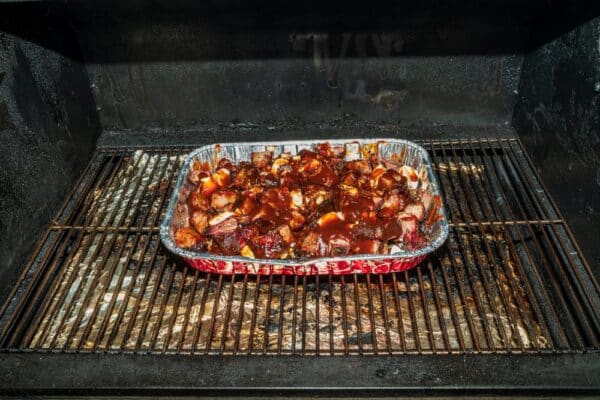
Burnt Ends with Butter in Foil Pan on Grill
This option is only for the cubed burnt ends.
- Let the Poor Man’s Burnt Ends cook until they reach an internal temperature of 165F.
- Then, place them in a deep aluminum tray and the reduced BBQ sauce over the burnt ends. Mix them a bit to ensure they’ve all received their share of barbecue sauce.
- Add a few butter pats, and an extra sprinkle of brown sugar if you like it sweeter, and then cover the roasting pan with aluminum foil.
- Place the pan back on the heat, and let them cook for another hour, or until they are tender enough to easily be pulled apart.
Finally, it’s time to serve your Poor Man’s Burnt Ends, and if you have followed these guidelines, I can guarantee that every single guest at your cookout will hear the angels sing when the tender, tasty cubes melt in their mouths.
Serving options are endless
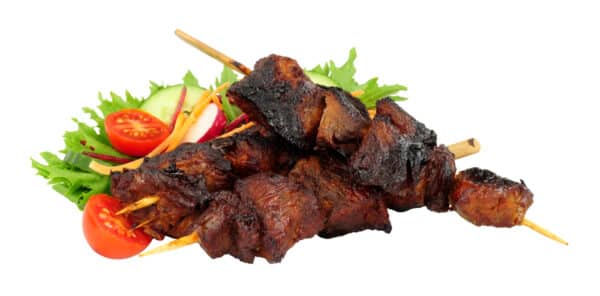
Burnt Ends Kebabs
- Make burnt-end kebabs on bamboo skewers.
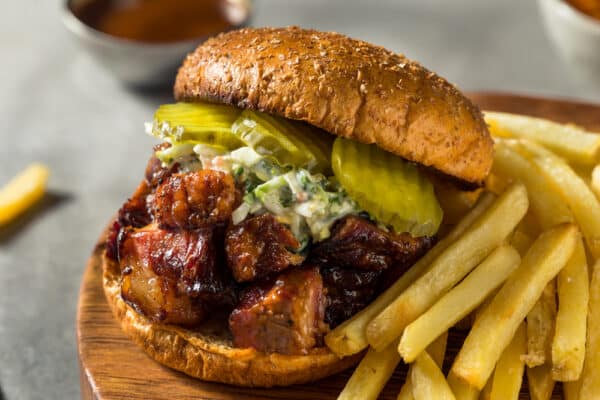
Poor Man’s Burnt Ends on Bun
- Serve your burnt ends with a slice of onion and pickle on a bun.
- Make BBQ nachos by serving them on tortilla chips with shredded cheese, green onion, and sour cream.
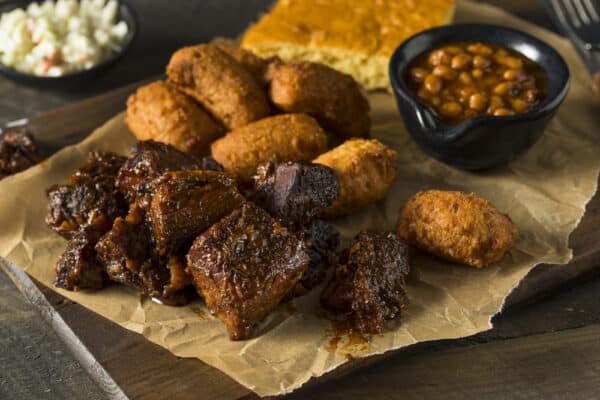
Poor Man’s Burnt Ends Served with Baked Beans
- Serve it as an appetizer or an entrée accompanied by sides such as baked beans, mac and cheese, or veggies like Brussels sprouts hot off the grill.
- Be creative and serve Poor Man’s Burnt Ends on Tacos.
Frequently Asked Questions
Q: What kind of meat is poor man’s burnt ends?
A: Regular burnt ends are made from beef brisket, while poor man’s burnt ends are made from beef chuck roast.
Q: Are burnt ends tough and chewy?
A: No because they are smoked slowly at a low temperature, making them tender with a nice bark on the outside.
Q: How do I store poor man’s burnt ends?
A: You can place them in an airtight container or keep them in the foil pan you smoked them in, covered with aluminum foil. Then store in the refrigerator for up to 3 days.
Q: What’s the best way to reheat burnt ends?
A: Place the burnt ends in a 350°F pre-heated oven for about 20 minutes. Leave the aluminum foil covering the dish when reheating.
Another option is to reheat any leftovers in the microwave. Do it in 30-second intervals, stirring each time until warmed through.
You can also warm them up in a saucepan on the stovetop over medium heat until warmed through.
Q: Can I make poor man’s burnt ends in the oven?
Yes, you can follow all the same steps as for smoking poor man’s burnt ends to prepare them in an oven. The only difference might be the lack of smoke flavor. To get the burnt effect, you can finish them off under the broiler for a few minutes before serving.
Q: What other meat cuts can be used to make burnt ends?
You can use other cuts of meat as well, such as pork belly, pork shoulder, and even lamb shoulder. Pork belly burnt ends are becoming increasingly popular as they offer a delicious alternative to beef, with a similar texture and flavor.
Q: Are poor man’s burnt ends healthy?
A: Beef chuck is higher in fat than some other cuts, which can contribute to higher cholesterol levels. So, while beef chuck poor man’s burnt ends are not necessarily high in cholesterol, they do contain a significant amount of saturated fat, which, unlike trans-fat, can contribute to higher levels of LDL (the “bad” cholesterol) in the bloodstream if consumed in excess.
Furthermore, although the beef chuck may not be high in carbohydrates, the BBQ sauce you pour over the poor man’s burnt ends is loaded with carbs – unless you make your own and use artificial sweeteners.
Does your budget allow brisket burnt ends? No, learn here how to get the same melt-in-the-mouth poor man’s burnt ends using less pricey chuck.
Learn More About Grilling
If you want to learn more about grilling, check out these other helpful resources!

Kevin Turner
Hi there, I'm Kevin Turner, Founder and CEO of thegrillingmaster.com. I started this website to share my passion and knowledge with you. You can leverage my years of experience as a pit master and professional to grill great food!
About The Grilling Master
Hi there, I'm Kevin Turner, Founder and CEO of thegrillingmaster.com.
My passion has always been grilling, smoking and BBQ delicious meats that satisfy my inner carnivore!
I started this website to share my passion and knowledge with you, the hungry reader who wants to prepare the perfect meal.
You can leverage my years of experience as a pit master and professional.
Send me a message and let's connect on Twitter here.


